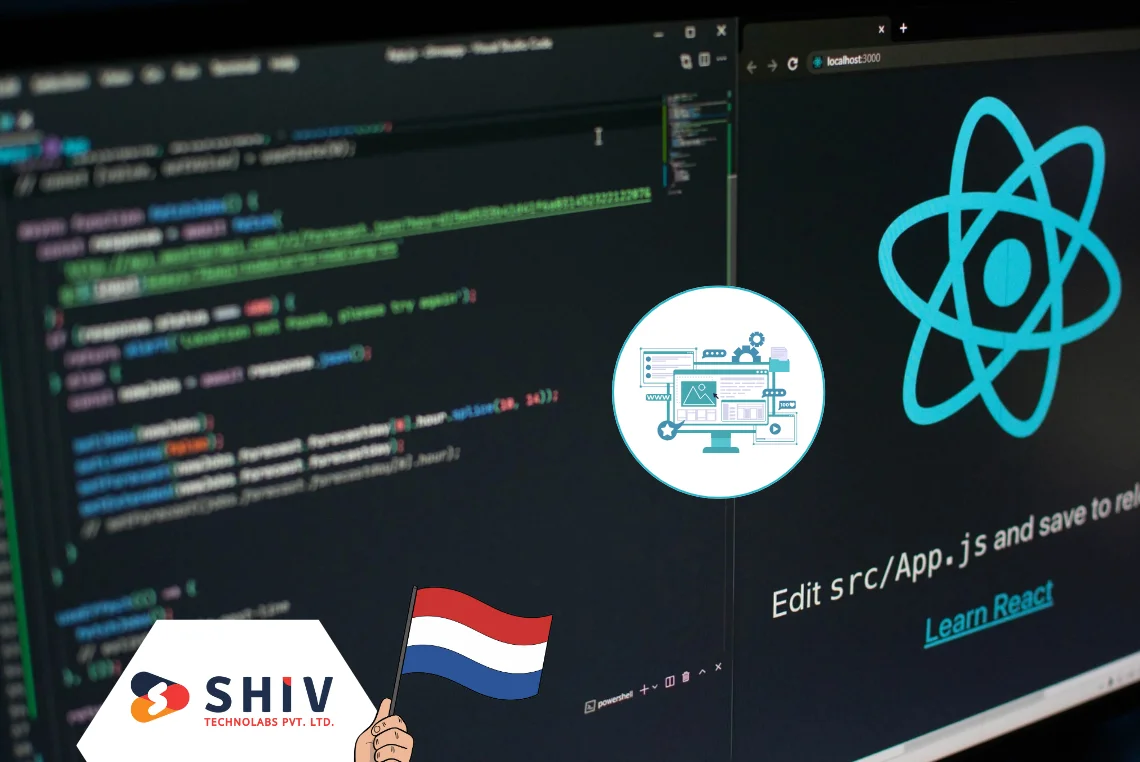Table of Contents
Building scalable, efficient web applications matters for teams that expect growth and steady performance under real traffic. Pairing Next.js with Docker gives a consistent setup, faster releases, and predictable scaling across local, staging, and production. This guide covers setup, a Next.js 14 Dockerfile, env handling, and Next.js development services for faster delivery and lower risk.
What is Next.js?
Next.js is a React framework for fast, modern web apps with server-side rendering, static generation, and API routes. It adds built-in routing, image handling, and incremental builds that keep pages quick and stable during traffic spikes. Paired with Docker and Next.js development services, teams ship consistent builds and clear releases across stages.
Why Use Docker with Next.js?

Docker packages your Next.js app with its runtime and dependencies in a single, repeatable unit. The container runs the same on laptops, servers, and CI, cutting setup drift and surprise bugs. You get consistent ports, clean environment variables, and predictable builds for SSR, SSG, and API routes.
Teams ship faster with clear Dockerfiles, cached layers, and multi-stage builds that keep images small and rebuilds quick. Containers scale horizontally when traffic jumps, and they fit cleanly with databases, queues, and background workers. Our next js development services configure Compose and CI/CD so updates roll out safely, quickly, and without downtime.
Also Read:- How Do You Set Up Flash Messages in Node.js with connect-flash?
# Setting Up Next.js with Docker
Let’s walk through the steps to containerize a Next.js application using Docker.
Step 1: Install Docker
Before you begin, Docker should be installed on your machine. You can download Docker from the official Docker website, then verify the installation by running the following command:
docker --version
Step 2: Create a Next.js Project
If you don’t have a Next.js project, you can create one with this command:
npx create-next-app@latest
This will generate a new Next.js project in your chosen directory.
Step 3: Creating a Dockerfile for Next.js
The Dockerfile defines the instructions needed to build a Docker image for your application. Below is an example Next.js 14 Dockerfile:
# Use an official Node.js runtime as a parent image FROM node:16-alpine AS base # Set the working directory inside the container WORKDIR /app # Copy package.json and package-lock.json files COPY package*.json ./ # Install dependencies RUN npm install # Copy the rest of the app's code to the container COPY . . # Build the Next.js app RUN npm run build # Set the environment variable to run the Next.js app ENV NODE_ENV=production # Expose the port the app runs on EXPOSE 3000 # Start the app CMD ["npm", "start"]
This Dockerfile builds your Next.js application and prepares it for production use.
Managing Environment Variables in Docker
Handling environment variables is important when working with Docker and Next.js. These variables allow your application to work in different environments by adjusting settings without changing the code.
To manage Next.js Docker environment variables, create a .env file in the project root directory. Here’s an example:
# Environment variables for Docker NEXT_PUBLIC_API_URL=https://api.example.com NODE_ENV=production
In the Dockerfile, you can copy the .env file into the container to make these variables available:
# Copy .env file COPY .env .env
Alternatively, you can pass the environment variables during the container run:
docker run -p 3000:3000 --env-file .env my-nextjs-app
This makes sure your app can adjust according to the environment it is running in, without needing to modify the code.
Benefits for Next.js Developers Using Docker
Consistent Environments
Docker runs the same Node version, dependencies, and configs across laptops, CI, and servers everywhere. Your Next.js app behaves predictably in dev, test, and production, reducing setup drift and hidden bugs. Teams save hours they once spent fixing machine differences before feature work can begin properly.
Faster Onboarding and Collaboration
New engineers start quickly by running one container and one Compose file, not lengthy local setups. Code reviews focus on features, while shared images and scripts keep everyone aligned on tooling and steps. Product managers see fewer blockers, and releases move forward with clear timelines and predictable handoffs.
Scalable Architecture with Containers
Run SSR, API routes, and background jobs as separate containers you can replicate as traffic grows. Autoscaling groups or orchestrators add instances during peaks, keeping responses fast under heavy demand periods and spikes. Clear service boundaries also simplify ownership, monitoring, and capacity planning across teams and environments consistently over time.
Smaller Images and Faster Builds
Multi-stage builds keep images tidy and trim, while cached layers cut rebuild time during iterations. You ship lighter artifacts, spend less on storage, and shorten feedback cycles for every pull request consistently, too. Smaller surfaces also help audits and reduce risk from unnecessary packages and tools.
Reliable Testing and Debugging
Isolated containers make unit, integration, and end-to-end tests repeatable across contributors and machines without guesswork or flaky mocks. You can run services locally, attach debuggers, and trace issues without affecting other parts of the system. Consistent logs and metrics shorten triage and help teams learn from incidents faster over time.
Partner for Next.js and Docker Success
Shiv Technolabs offers Next.js development services that set Docker up from the first sprint. We craft clean Dockerfiles, safe env handling, and CI pipelines that ship faster with fewer surprises for teams. Partner with our team to plan, test, release, and document a containerized Next.js stack built for growth.
# Using Docker Compose with Next.js
For more complex setups, where you need to run multiple services (like a database), Docker Compose simplifies managing different containers. It allows you to define all services in a single file.
Here’s an example docker-compose.yml for a Next.js application:
version: '3'
services:
app:
image: my-nextjs-app
build:
context: .
dockerfile: Dockerfile
ports:
- "3000:3000"
environment:
- NODE_ENV=development
To start your containers, run:
docker-compose up
This command will build and run your Next.js application, simplifying the management of multiple services.
Optimizing Docker Images for Next.js
To keep your Next.js Docker image lightweight and efficient, use multi-stage builds. This method allows you to separate the building phase from the production phase, keeping the final image size smaller.
Here’s an example:
# Build stage FROM node:16-alpine AS build WORKDIR /app COPY package*.json ./ RUN npm install COPY . . RUN npm run build # Production stage FROM node:16-alpine AS production WORKDIR /app COPY --from=build /app ./ EXPOSE 3000 CMD ["npm", "start"]
This setup reduces the final image size, which leads to faster builds and reduced resource usage.
Next.js Development Services and Docker Integration

Many companies today seek Next.js development services to create high-performing, scalable applications. These services often include Docker integration, which helps to streamline development workflows and improve collaboration among team members.
By using Docker, Next.js developers can focus on building quality applications without worrying about differences in local environments. Whether your business is looking to start a new project or scale an existing one, finding the right Next.js development services that incorporate Docker can significantly improve project outcomes.
Conclusion
Next.js with Docker gives your team a consistent setup across local work, testing, and production releases. Your builds stay repeatable, features ship faster, and performance holds steady as traffic grows over time. This approach keeps images lean, code organized, and handoffs clear across developers, QA teams, and platform engineers.
As a Next.js development company, Shiv Technolabs builds Docker-ready Next.js apps from day one. We write clean Dockerfiles, manage environment variables safely, and set pipelines that support quick, reliable releases. Our team shares examples, reviews each step, and aligns with your roadmap, budget, security needs, and timelines.
If you want a containerized Next.js stack that scales, we plan, build, test, and hand over cleanly. You get predictable environments, faster onboarding, fewer surprises, and a clear path for growth as needs change. Talk to our Next.js development company to start your Next.js project with Docker and move forward with confidence.






















